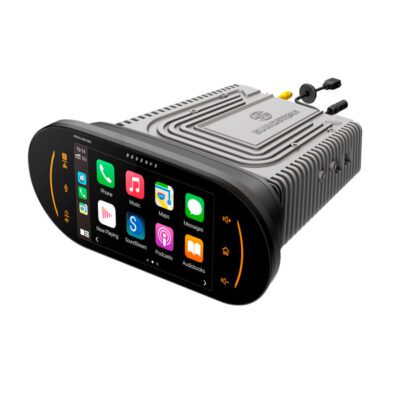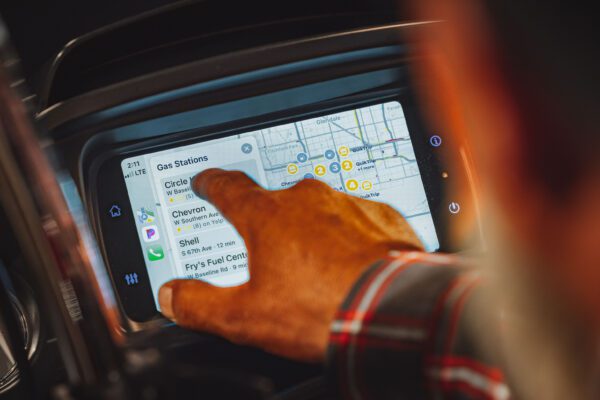The world of car and motorcycle audio technology is perpetually evolving, offering enthusiasts an array of new features and enhancements. From seamless connectivity options to immersive sound experiences, staying abreast of the latest trends can significantly enhance your driving or riding experience. In this article, we will delve into some of the most exciting advancements in car audio technology and motorcycle audio technology for 2024.
Wireless Connectivity
One of the most significant trends in car and motorcycle audio technology is the shift towards wireless connectivity. As smartphones and portable devices are everywhere, it’s important for systems to easily connect with them. Bluetooth connectivity has become a standard feature in modern car and motorcycle audio technology, enabling effortless streaming of music and other content from your phone or tablet.
Moreover, the adoption of advanced wireless protocols such as Wi-Fi Direct and Apple CarPlay has further streamlined the integration process. These technologies provide higher data transfer rates and more stable connections, enhancing the overall experience. In addition, Near Field Communication (NFC) is being incorporated into car and motorcycle audio technology, allowing for instant pairing with compatible devices with just a tap.
Voice-Activated Smart Assistants
The integration of voice-activated smart assistants has revolutionized the way we interact with car and motorcycle audio technology. Assistants such as Alexa, Google Assistant, and Siri allow for hands-free control of different functions, making things safer and easier. Modern systems are equipped with built-in microphones and sophisticated voice recognition software, enabling users to control playback, adjust volume, and even navigate without diverting their attention from the road.
These smart assistants are also becoming more integrated with other vehicle systems. For instance, you can now use voice commands to adjust climate controls, send text messages, or get real-time traffic updates, making your driving or riding experience more connected and intuitive. The latest car and motorcycle audio technology ensures that you have a seamless and safe interaction with your system.
High-Resolution Audio
In recent years, there has been a substantial push towards high-resolution audio (HRA), which offers a superior listening experience compared to traditional compressed formats like MP3. FLAC and ALAC formats keep more details from the original recording, giving a better sound experience.
Many new car and motorcycle audio technology systems now support these high-resolution formats. Also, improvements in digital-to-analog converters (DACs) in systems make sure that high-quality files are played accurately. For audiophiles, this means a listening experience that captures the nuances and dynamics of the original recording, whether you’re commuting or on a long road trip.
Immersive Car and Motorcycle Audio Technology
The rise of immersive technologies is another groundbreaking trend in car and motorcycle audio technology. Formats like Dolby Atmos and DTS, traditionally associated with home theater systems, are making their way into car and motorcycle setups. These technologies create a three-dimensional soundstage, where audio can be perceived as coming from above, below, and all around the listener.
In-car systems equipped with these technologies use multiple speakers strategically placed throughout the cabin to deliver an enveloping experience. For motorcycles, helmet systems are being developed with similar immersive sound capabilities, allowing riders to experience high-fidelity while on the move.
Advanced Sound Tuning and Personalization
Modern car and motorcycle audio technology offers unprecedented levels of customization, allowing users to tailor their listening experience to their preferences. Digital signal processing (DSP) technology enables fine-tuning of various parameters such as equalization, time alignment, and crossover settings. Some systems even come with built-in microphones to perform automatic sound calibration based on the vehicle’s acoustics.
Additionally, personal sound zones are becoming a reality in the latest car and motorcycle audio technology. These zones allow each passenger to have a customized audio experience without interfering with others. Using headrest speakers and sophisticated DSP algorithms, these systems create isolated sound bubbles, ensuring that everyone enjoys their preferred content.
Integration with Smart Home Ecosystems
As smart home technology becomes more prevalent, car and motorcycle audio technology is starting to integrate with these ecosystems. This integration allows users to control smart home devices directly from their vehicle. For example, you can adjust your home’s thermostat, control lights, or even monitor security cameras while on the road.
This connectivity is facilitated through platforms like Apple HomeKit, Google Home, and Amazon Alexa. The integration ensures that your vehicle becomes an extension of your smart home, providing convenience and enhancing your overall connected lifestyle.
Sustainable and Eco-Friendly Audio Components
The trend towards sustainability has also reached the car and motorcycle audio technology industry. Manufacturers are increasingly using eco-friendly materials and sustainable practices in the production of components. Recycled plastics, natural fibers, and low-emission manufacturing processes are being adopted to reduce the environmental impact.
Furthermore, advancements in energy-efficient technologies ensure that high-performance systems do not significantly drain your vehicle’s battery. This focus on sustainability aligns with the broader movement towards greener and more environmentally conscious automotive solutions.
Augmented Reality (AR) and Audio
Augmented Reality (AR) is an emerging trend in car and motorcycle audio technology that promises to change the way drivers and riders experience sound. AR can overlay cues onto the real world, providing directions, alerts, and other information without requiring visual attention. This technology is particularly beneficial for motorcycle riders who need to stay focused on the road.
AR audio systems can provide turn-by-turn navigation, traffic updates, and hazard warnings directly into the rider’s helmet, enhancing safety and convenience. For car drivers, AR can enhance the infotainment experience by integrating with heads-up displays and other in-car systems.
Conclusion
The car and motorcycle audio technology industry is continually evolving, driven by technological advancements and changing consumer preferences. From wireless connectivity and smart assistants to high-resolution and immersive sound technologies, there are numerous exciting developments to explore. When you upgrade your audio system, it’s important to stay informed about trends. This will help you choose the best option for a modern and enjoyable experience.
Whether you prioritize connectivity, sound quality, or smart home integration, the latest innovations in car and motorcycle audio technology ensure that there’s something for everyone. Embrace these trends to enhance your driving or riding experience with the latest and greatest in technology. The future of car audio technology and motorcycle audio technology is bright, promising more immersive, convenient, and sustainable solutions for all enthusiasts.
 PDA Road Gear
PDA Road Gear 


